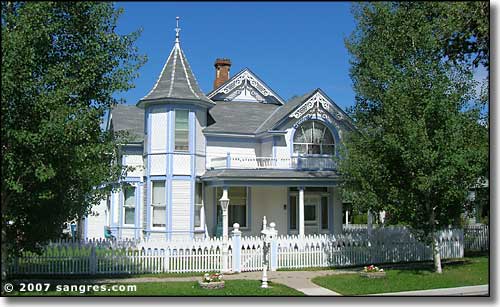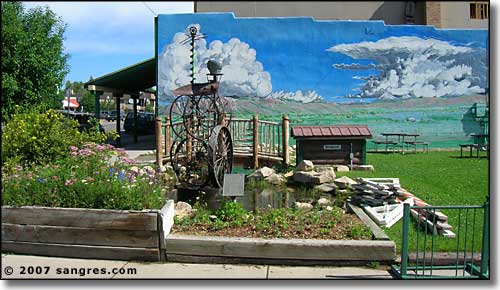
Gunnison, Colorado, is a pretty little town in a gorgeous place: everything that makes up the dream of a real Colorado vacation is close by. Blue Mesa Reservoir, the largest body of water in Colorado, is just 10 minutes west of town. A few minutes further down the road you come to Morrow Point Lake, where the chasm that becomes the Black Canyon of the Gunnison begins to show. The main road in from the west and then out to the north is part of the West Elk Loop Scenic Byway, a scenic road that skirts the lower reaches of what once was (approx. 30 million years ago) the West Elk Volcano.
In the very beginning, Gunnison was probably just a couple of trapper's shacks on the northern route of the Old Spanish Trail, a trail that connected Santa Fe, Texas and Mexico with the more northern Spanish settlements in Utah, Nevada and California. Then it became a supply station for miners and cattle ranchers. The city of Gunnison was incorporated in 1880 and named for Captain John W. Gunnison who had surveyed the area for the transcontinental railroad in 1853.
In 1881, the Denver & Rio Grande Railroad arrived with plans to continue on westward and run freight to the Pacific (this idea was broken on the back of the Black Canyon of the Gunnison, just west of town). However, the railroad did go to the coal mines around Crested Butte and enough black gold was coming out of there to keep the railroad busy until 1952 when the coal mines shut down during a serious financial recession that lasted well into 1956 (during President Eisenhower's first term in office: historically, this happens every time the Republicans re-take the White house).
There were some good silver strikes in the eastern part of the county but the silver rush was over by 1883. As silver mining declined, so did the market for cattle. Then began the war between the sheep ranchers and the cattle ranchers with the cattle ranchers actually stealing and killing sheep and destroying the sheep ranchers' property. This ended shortly when falling beef prices forced many cattle men into raising sheep (a cheaper alternative to raising beef cattle).
A famous resident during this time was Wyatt Earp who ran a faro game in Gunnison for several years. He stayed in the area because Arizona kept trying to extradite him for murder but Colorado's governor wouldn't allow it, saying that Earp couldn't get a fair trial in that state.
During the Spanish Influenza pandemic of 1918, the residents of Gunnison County barricaded all the highways at the county lines for 2 months. Railroad conductors on trains passing through informed all travelers that if they stepped off the train in Gunnison they would be immediately arrested and placed in quarantine for five days. These measures may seem extreme to some folks but not a single person died of influenza in Gunnison during that grave time.
The Gunnison Basin is a high altitude playground filled with many different wonders of Nature: from high mountains to deep canyons, from ancient calderas to dikes, stocks and laccoliths with lots of welded tuff, brecchia and just plain volcanic ash in between. This is huge countryside with lots to explore out there.
But, if the natural wonders aren't enough for you, the settlers of the Gunnison Basin also serve up a varied feast of events all year long. Mountain bikers will find numerous competitions happening throughout the year, as well as Fat Tire Bike Week, held annually in Crested Butte. For the armchair cowboy, Gunnison hosts Cattleman's Days every year, the oldest rodeo in the West.
Winter brings the Extreme Skiing Championships to Crested Butte. Cultural events are also occur throughout the year, with summer concerts and art festivals bringing some of the finest musicians and artists in the country to the territory.
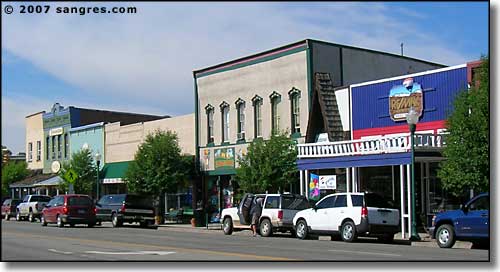
Downtown in Gunnison
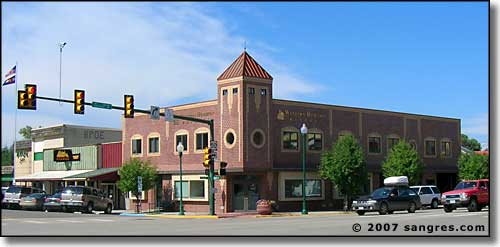
At the corner of Main & US 50
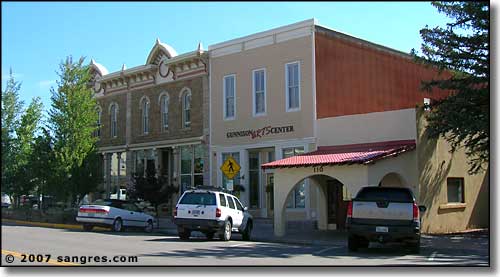
Just south of US 50
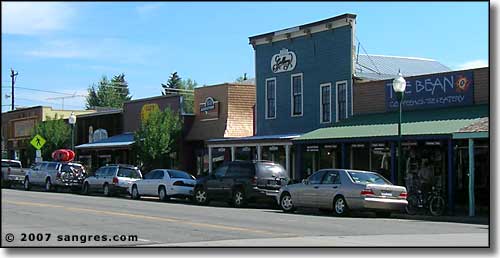
On Main St., just north of US 50
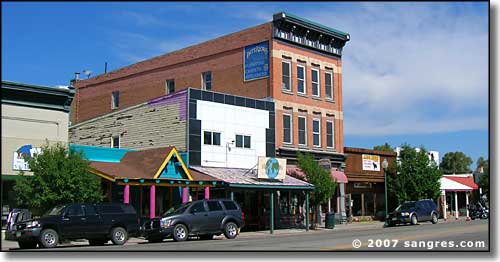
On Main St., just north of US 50
